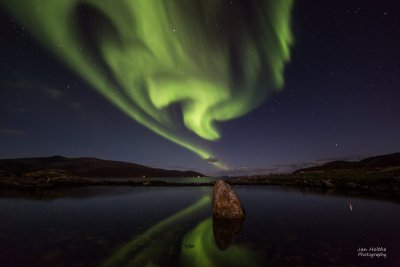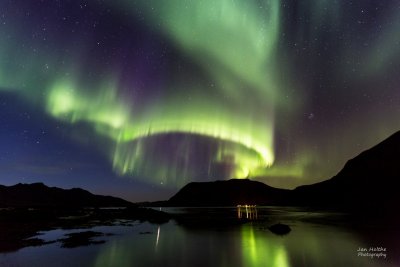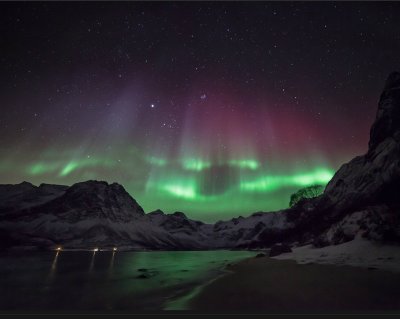Waasanoode
It doesn’t look good for Chogan and Kanti. They are trying to paddle half way across Gitche Gumee to the western shore where their enemy awaits them, and they can’t turn back because their own people believe they are traitors. If they are to avoid scouts from the Sioux and the Ojibway nations, they must travel at night. Fortunately, the Gitche Manitou (Great Spirit) is lighting their way with the waasanoode’s (northern lights) brilliant display.
The northern lights can provide more light than a full moon. It is no wonder many cultures developed folklore to explain this phenomenon. The Ojibway believed at one time the earth was green and game was plentiful. Then a great flood came that drowned everyone not living in the far north. So much rain fell that the earth tilted away from the sun. Darkness engulfed the surviving people. They asked the Gitche Manitou for help, and he suggested they migrate south. But many people lost their way in the darkness. The people again asked the Gitche Manitou for help, and this time he created great mountains of ice. When the sun from the south shined on the mountains, the ice crystals reflected the light into the sky forming the waasanoode. The people could now find their way south where they became the ancestors of the Ojibway people.
Aurora Borealis

We now know the sun periodically hurls out free electrons and protons. The earth’s magnetic field deflects most of these electrically charged particles, but a few particles enter the earth’s upper atmosphere near the poles where the magnetic field is weaker. When they collide with particles in earth’s atmosphere they produce light. Scientists call this light "Aurora Borealis" if it is in the north and "Aurora Australis" if it is in the south.
Green Lights

The most common color is the yellowish-green seen in the photograph on the right. This is caused by collisions with oxygen molecules about sixty miles above the earth. If you were to watch the Aurora Borealis in person, you would quickly discover the solar wind makes the northern lights dance across the sky.
Red Lights

Occasionally people see red light such as that seen in the picture on the left. This is produced by collisions with high-altitude oxygen at heights of up to two hundred miles above the earth. Collisions with nitrogen produce blue or purplish-red aurora.
Northern light displays are more common in the northern climates. The pictures on this web page are courtesy of Jan Holthe (thank you, Jan). Jan lives in the city of Tromso, a small, but beautiful Norwegian town located 300 miles north of the Arctic Circle. He can see northern lights day or night during the winter months when there is twenty-four hour darkness. If you would like to see more of his northern lights pictures, check out his web site at http://www.jansphoto.smugmug.com/ .
Now let's return to Chogan and Kanti and see if they can survive their journey with help from the Waasanoode.
